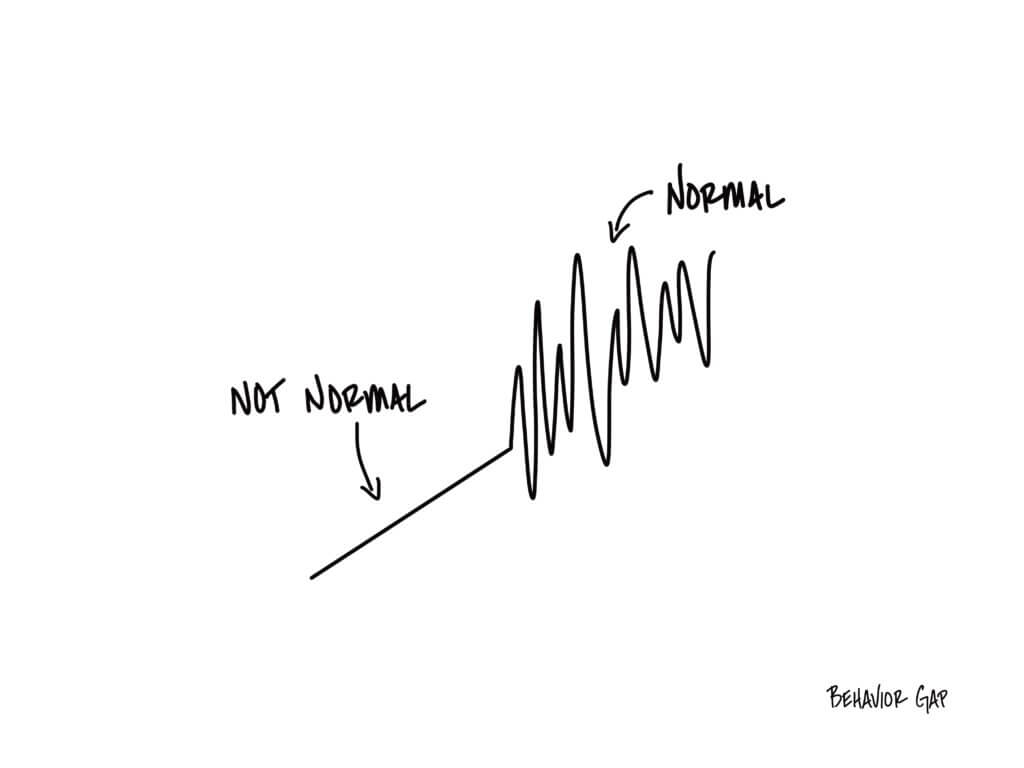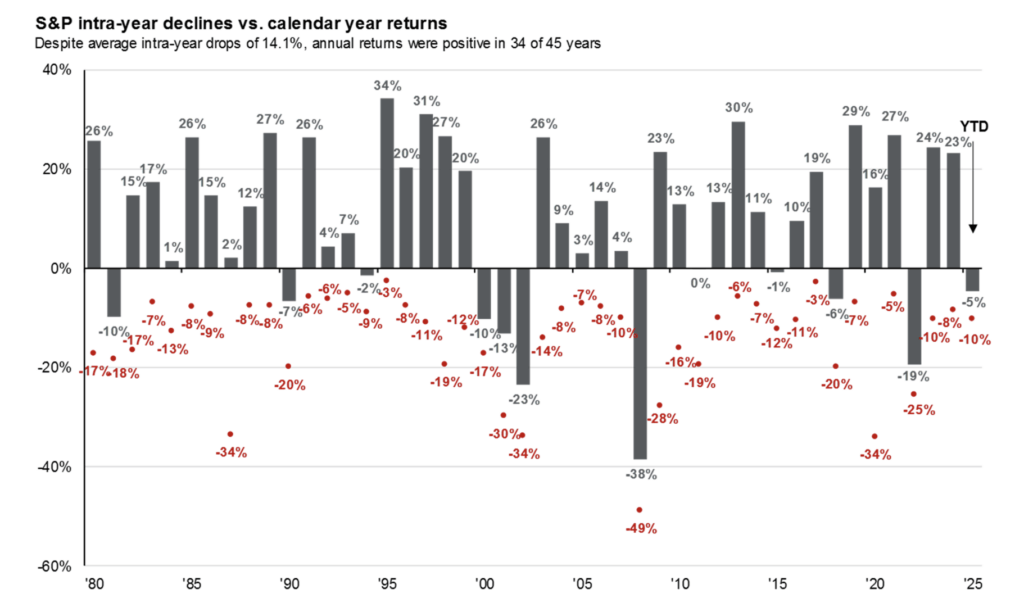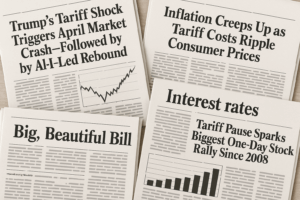
Complacency to Panic
Investment ManagementApr 03, 2025
The past two years have been fairly easy years in the market all factors considered. Some would say we deserved it after the bear market in 2022 where just about everything except cash sold off. It was a difficult year because there was nowhere to hide, and diversification didn’t really provide the level of downside protection that many would have expected. The main reason for that was a long overdue correction in bonds. While that was arguably the most painful part, it made bonds a lot more attractive to allocate capital to in a diversified portfolio.
Every investor has different ways of dealing with market volatility. Many choose to ignore it and not look at their accounts. This time around feels like it has been almost impossible to completely ignore. The market has been all over the place depending on what tariff announcement comes out in a given day. While there has been a lot of talk about the tariffs, nobody knows what the outcome will be. That is what makes this so difficult. Markets don’t like uncertainty. In the meantime, you can’t open your phone or turn on your television without hearing about something related to tariffs and the market.
The low volatility, high return years of 2023 and 2024 provided a sense of complacency. Stocks were moving in the right direction without any major detours. The rally strengthened after the election on hopes of a more business-friendly administration with less regulation and lower taxes. The honeymoon ended in February as the post-election gains were erased and reminded us that markets don’t go up in a straight line. Quite honestly, market volatility is normal. What we experienced in 2023 and 2024 isn’t completely normal. As the chart below from JP Morgan illustrates, the average market drawdown from peak to trough in a year is 14%. Unfortunately, volatility is the price you pay to achieve returns above the risk free rates of return over time.

Despite the first negative quarter for the S&P 500 since 2023, the diversified portfolio has held up quite well. Bonds are having a very good start to the year and have provided the downside protection that we expect in exchange for the lower returns in up markets. Gold continued its momentum from last year and even international stocks had a positive first quarter. As of this writing, there is a global market sell off in reaction to the much-anticipated tariff announcements from President Trump in the Rose Garden after the market close on April 2nd. The selling is spreading into more areas than US technology. However, bonds appear to be holding up very well, which is what asset allocators expect in down markets.
The current environment is unprecedented as we have a live negotiation taking place under a microscope with the state of the global economy at stake. The last time we used the word unprecedented was during Covid. That wasn’t an easy time either, but we made it through, and discipline paid off. While we aren’t excited about the uncertainty and volatility associated with it, we are confident that if you stick to your plan and focus on the long term, we’ll make it through this time, too.
**Chart: Source- FactSet, Standard & Poor’s, J.P. Morgan Asset Management. Returns are based on price index only and do not include dividends. Intra-year drops refers to the largest market drops from a peak to a trough during the year. For illustrative purposes only. Returns shown are calendar year returns from 1980 to 2024, over which the average annual return was 10.6%. Guide to the Markets – U.S. Data are as of March 31, 2025.
It is important to remember that investments in securities involve risk, including the potential loss of principal invested. Past performance is no guarantee of future results. Diversification does not guarantee a profit or protect against loss in a declining financial market. This publication should not be interpreted as legal, tax, or investment advice. For more information, please visit alliancewealthadvisors.com/legal-disclosures


